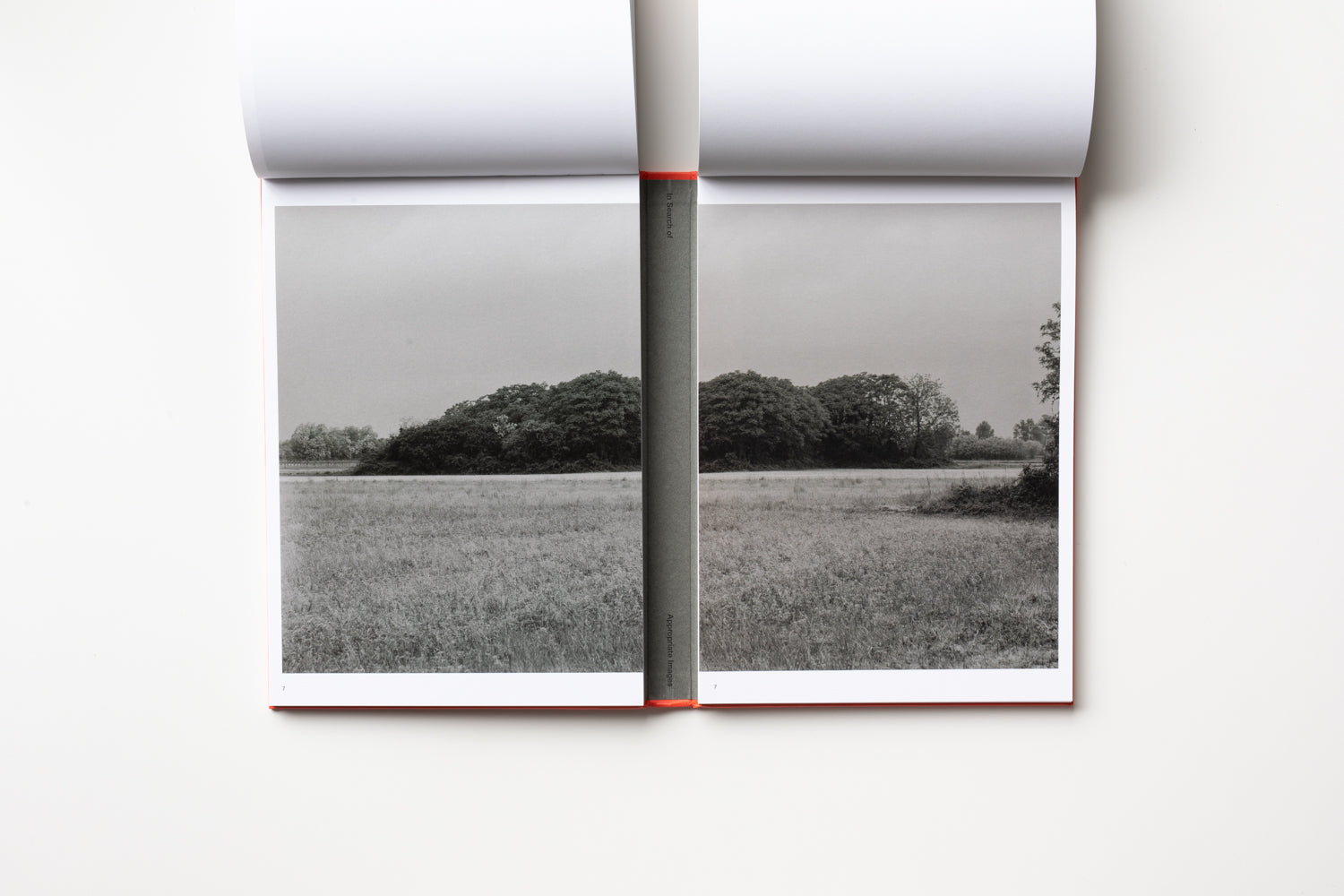Rocks and concrete floating amongst mountains lost in darkness. The cover already hints at a mysterious worldview, but the collection itself is just as impressive in design. When you open the reddish-orange hardcover, you'll find two books, divided into blocks on either side. The top is bound like a memo pad, and the vertical opening design hints at the otherworldly world that awaits.
Italian photographer Mattia Balsamini used to travel around the country to take photographs. However, due to the impact of the COVID-19 pandemic, not only travel for photography but also daily activities were restricted, and he began to spend most of his time in his studio. Is there something new he can do with the abundant time he has? Seeing this situation as an opportunity, Balsamini dug up his past photographs and archives, and spent time facing those images repeatedly, as if he were training.
The completed book could be said to embody that process, or it even feels expansive, as if it is still in the process of being completed. Each block is not completely independent, with related images arranged on the left and right, and some blocks contain a single photograph. By dividing one work into two blocks, the reader is free to turn the pages in any order, rather than following a sequence predetermined by the artist, resulting in a structure in which each reader can read the book through their own combination of photographs.





If you look closely, you will see that he does not simply dig up the photographs he has taken from his archives, but also weaves in his own documents, notes, copies and collages, and the cover photo is also one of the variations. Behind the photographs, which maintain consistency but feel diverse, lies his unique career, having worked as an assistant to commercial and fashion photographers in Hollywood, and then taught at the IUAV University, the first architecture school in Italy, and the European Design Institute in Turin.
America and Italy are countries with distinctive histories of artistic photographic expression, and share in common the fact that they have each formed their own unique context. Balsamini's work, which inherits both contexts, seems to strongly reflect the influence of contemporary American photography, which constructs complex sequences, and contemporary Italian photography, which explores visual culture and visual language.
However, one can imagine the following criticism of this type of work: Isn't this collection just a collection of unrelated images, put together like a word association game, and packaged up with the catchy phrase "randomness"? Where exactly is the social relevance or message of this work?

The following passage appears very modestly in the book's colophon:
"This book is a humble tribute to the statements of film director Werner Herzog in Images at the Horizon, a workshop that film critic Roger Ebert and director Werner Herzog held together on April 17, 1979 at the Facets Multimedia Center in Chicago. The conversation centered on the need for and the constant challenge of pure, absolute images that express our own deepest inner voice."
At first glance, this book seems like a collection of works that explores the effects and possibilities of combining images (in fact, the title invites such an interpretation). However, as the text on the colophon makes clear, this is an extremely personal work, in which the author, who was forced to live a different lifestyle than before, took this opportunity to face his archive, which could be said to be his own history, in order to listen to the voice of his heart. The vertical-opening block format is not a game of combining photographs, but rather a structure that expresses the way the author dives deeper and deeper in search of his "deep inner voice" with each turn of the page.
In summary, the book is structured as follows:
- In response to the changes in life caused by the pandemic, he confronted his own activities and life
- To achieve this, we turned to the archives, which are a collection of the past, and tried various combinations and editing techniques to search for images of the (future) that have never been seen before.
- In order to express this motivation and process in a book, we adopted a vertical opening, two-block book design.
The book's design is so distinctive that by the time you finish reading it you forget about it, but the motivation and social background of the book is the COVID-19 pandemic. Ironically, COVID-19 has instantly realized the contemporaneity that transcends borders and cultures that social media and the media had been striving for.
All works produced today, to varying degrees, are always imbued with a strong contemporary feel. However, is it the job of modern photographers to simply capture the times as a record and seek empathy? Rather, isn't it what is expected of photographers as artists to leave behind works for the future that simultaneously explore the means of expression, like this work?
-
Title: In Search of Appropriate Images
Artist: Mattia Balsamini
Skinnerboox, 2021
Hardcover with two blocks
190 x 265 mm, 160 pages
Designed by THINK WORK OBSERVE
First edition of 750 copies
ISBN: 978-88-94895-42-1
¥5,500 + tax
The product page isHere
-
6/9 Update
[Further Reading List]
For those who want to read further, we have compiled a list of other works that you should check out along with this book. Please refer to it to understand the context.
https://www.iack.online/collections/further-reading-contemporary-american-and-italian-photobooks

